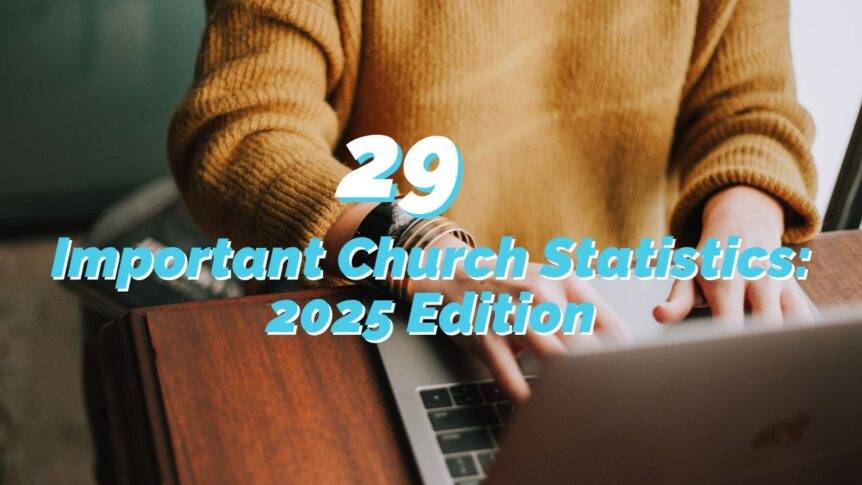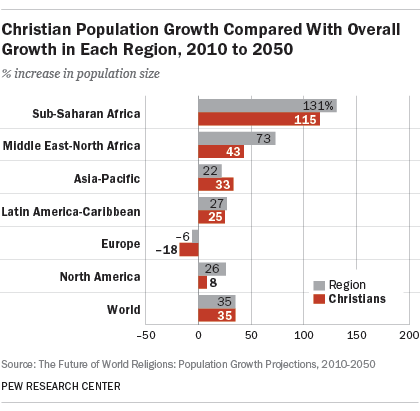As 2025 approaches, it’s time to reflect on statistics from the past year and how they’ll play into the year ahead. We’ve covered this topic a few times, and you’ll find that information down below! With a few additions, this is your church statistics 2025 edition!
Numbers and facts are an important part of any church and directly impact how you operate the next year. Every church has its own history, so not every statistic will relate to your church or be as relevant.
Now, let’s dive into some recent stats of the past year!
Estimated reading time: 13 minutes
Table of contents
- 29 Church Stats for 2025
- 1. What Percentage of Americans are Members of a Church?
- 2. Low attendance from people raised in Church
- 3. Average Age of Senior Pastors
- 4. Churches Still Recovering from Pre-pandemic Attendance Losses
- 5. Decline in Americans Claiming Christianity
- 6. Reasons People Don’t Attend Church
- 7. Decrease in Tithing
- 8. Growth in Christian Universities
- 9. Remote vs. In Person Services
- 10. Worship Preferences
- 11. Regular Tithing is low
- 12. Influence of Religion on American Life
- 13. Fast Growth for Multi-Campus Churches
- 14. Pre-pandemic numbers
- 15. Gen Z doubts God
- 16. Volunteer engagement about half
- 17. Millennial Attendance is Up 18%, but Boomer Attendance is Down
- 18. Non-Denominational Churches Are Gaining Momentum
- 19. Weekly Regular Attendance at 20%
- 20. What Percent of Millennials Attend Religious Services?
- 21. How Many People Leave the Church Each Day?
- 22. Lockdowns Accelerated Church Attendance Decline
- 23. What Percentage of Christians Do Not Attend a Church Service?
- 24. Engagement Is the New Church Attendance
- 25. Regular Attendance is Being Redefined
- 26. Growing churches offer different worship
- 27. Churches see high rate of new commitments
- 28. Reported Giving Amounts
- 29. The Majority of Americans Still Believe That Church is an Important Part of Christmas
- Previous Editions of Church Statistics You Should Know
- Looking Ahead to 2025
- More Resources on Church Stats
29 Church Stats for 2025
Below is a wide range of our findings from sources such as Gallup, Barna or Pew Research Center. You’ll find everything from church attendance statistics to the annual donation amount.
1. What Percentage of Americans are Members of a Church?
This may be a surprise, but Christianity is growing around the world and is growing faster than the rate of population. From 2020 to the mid-point of 2024, the world’s population is expected to grow from more than 7.84 billion people to more than 8.11 billion, a 0.87% growth trend.
The number of Christians worldwide is expected to climb from more than 2.52 billion to 2.63 billion, a 1.08% growth. The Christian population is projected to top 3 billion before 2050. So overall, church membership will see a drastic increase.
2. Low attendance from people raised in Church
Although nearly 50% of people attended church weekly as a child, only 20% attended weekly as adults.
This data comes from a survey conducted once again by Gallup, and the change is no surprise given the generational attendance fluctuations churches are experiencing. But it shows a shift in the modern mindset away from the habit of regular church attendance.
Churchgoers are looking for value in the experience of church – they don’t go simply out of habit.
3. Average Age of Senior Pastors
The demographic profile of senior pastors in the U.S. reveals an average age of roughly 51. With the majority being male, this statistic raises questions about diversity and generational leadership within church communities.
4. Churches Still Recovering from Pre-pandemic Attendance Losses
Churches are still grappling with the long-term effects of the pandemic, with many still operating at only 85% of their pre-pandemic attendance. This ongoing challenge underscores the need for innovative approaches to rebuild and engage congregations.
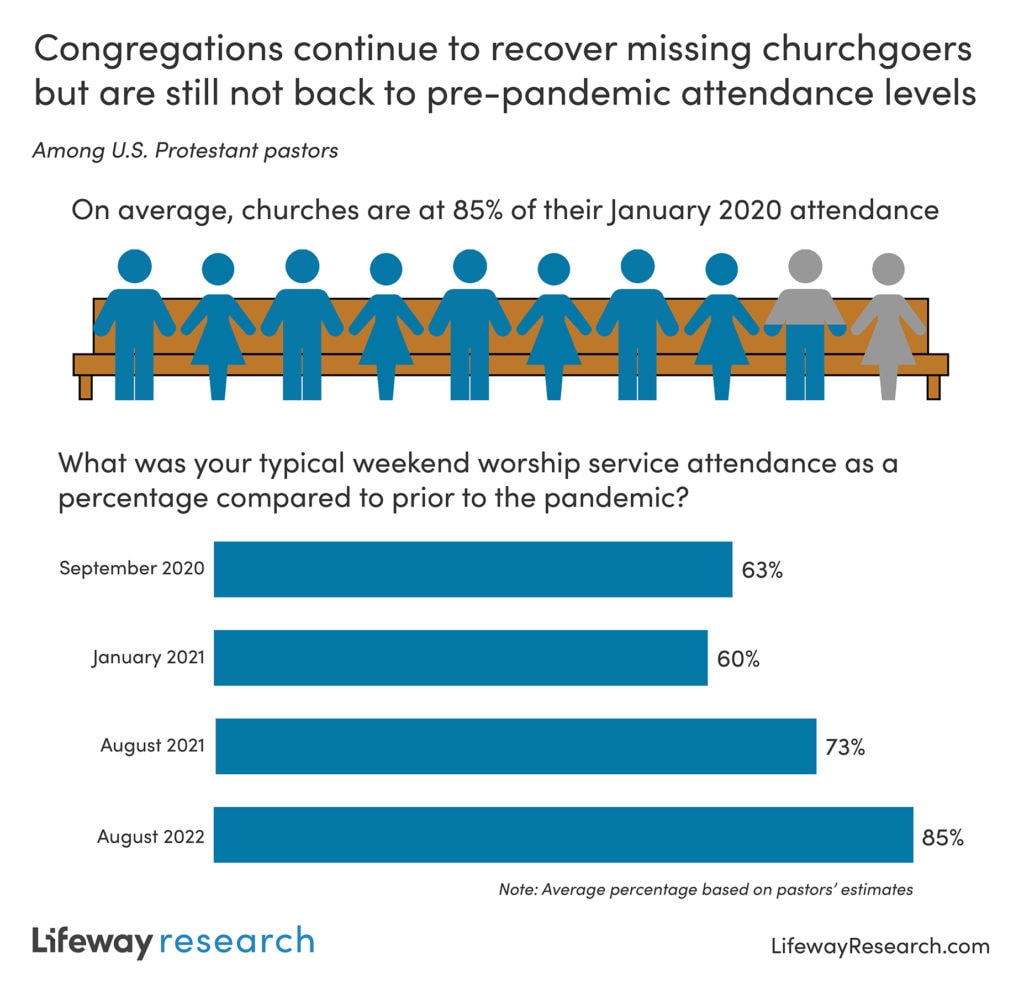
5. Decline in Americans Claiming Christianity
The predicted decline in Americans identifying as Christian, potentially falling below 50%, points to a significant shift in the religious landscape of this country. This trend is juxtaposed with the growth of independent, non-denominational Christian churches.
6. Reasons People Don’t Attend Church
Understanding why people choose not to attend church is crucial for addressing the issues. Health concerns, un-engaging sermons, and difficulty in finding a suitable church are some of the main factors influencing this trend.
7. Decrease in Tithing
The decrease in tithing, with an average of only $17 per week and a significant portion of churchgoers not contributing financially, presents a significant challenge for church funding. This trend necessitates a reassessment of how churches approach stewardship and giving.
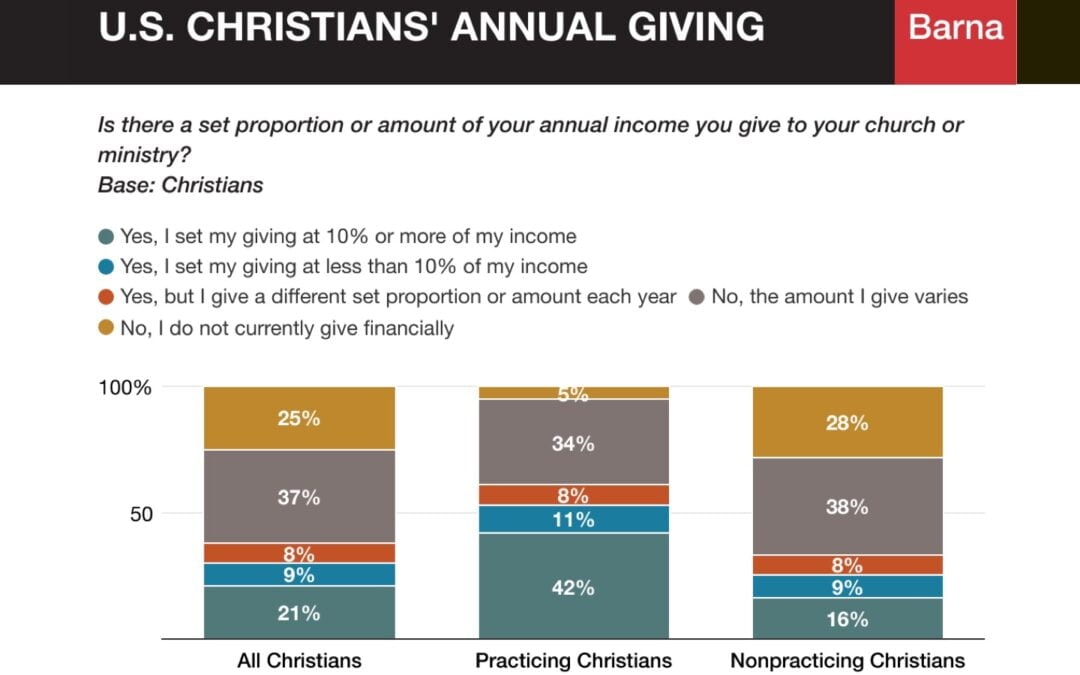
8. Growth in Christian Universities
The surge in enrollments at Christian universities, driven by students seeking community and connection, highlights the appeal of faith-based education. This trend reflects a broader desire for meaningful community experiences, particularly in the wake of the pandemic’s isolating effects. More and more, the younger generation are seeking a higher power.
9. Remote vs. In Person Services
84% of U.S. adults who recently attended religious services did so in person, while 16% did so remotely.
This shows us that your most loyal churchgoers are eager to return to church but still appreciate the flexibility of the hybrid church model. Online church statistics show that people appreciate the option to worship from home.
10. Worship Preferences
44% of people prefer to worship on their own.
In a survey conducted by Gallup, it is evident that nearly half of the people who responded wanted to worship on their own. And only about 30% attended church in the last 7 days. This could be a sign that your church should offer flexible ways to attend and adopt a hybrid model.
Suppose you can connect with these people who like to worship on their own through readily available content like recorded sermons, podcasts, mini-documentaries, and more. In that case, you’re more likely to build an ongoing relationship with them – and convert them into regular church members.
11. Regular Tithing is low
Only 10-15% of an average congregation tithes regularly.
Converting church attendees into regular tithers can be tricky, and this number is lower than most church leaders want to see.
12. Influence of Religion on American Life
75% of people surveyed said they thought religion was losing its influence on American life.
While a survey data from Gallup may spell out trouble for some churches, it’s representative of the modern mindset. The church should be about a connection to God, whatever that looks like to your congregation – and not necessarily a strict set of rules to follow.
This could also be why nondenominational churches have seen such growth in the last several years. It may be time to reevaluate your approach during your services to make your church more appealing to an audience with a different mindset.
13. Fast Growth for Multi-Campus Churches
The rapid growth of multi-campus churches, particularly those with identical campuses, is a testament to the success of a unified church model. Churches surveyed have seen a staggering 25% increase in attendance over the last year, highlighting the effectiveness of consistent experiences across multiple locations.
For more information about multisite churches, find our article here!
14. Pre-pandemic numbers
About 16% of Christians who attended church pre-pandemic have stopped attending entirely (Barna). Boomers have stuck with their churches more than any other generation, with 65% still attending the same church as they did before COVID (Barna). Boomers represented the greatest loss in attendance.
15. Gen Z doubts God
72% of Gen Z respondents who don’t go to church also doubt the existence of a God.
Gen Z is quickly becoming an even more elusive generation than the Millennials. This statistic by Millennial Outreach suggests a continuation of the trend of skepticism by Millennials.
16. Volunteer engagement about half
On average, churches engage 45% of students and adults in volunteer roles.
The Unstuck Group surveyed churches and this indicates a vital aspect of church volunteering. It’s the need for churches to track the efficiency of their volunteer engagement.
Tracking how many of your church members volunteer will help you assess the quality of your volunteer program and plan your next steps. It will also help you target specific volunteer groups with different events, activities, and campaign needs!
17. Millennial Attendance is Up 18%, but Boomer Attendance is Down
One of the most interesting trends in the 2020s is the surge in Millennial attendance. While Boomer attendance is on the decline, in part due to the fact that Boomers are aging, it would be easy to imagine that no one is there to take their place.
Fortunately, that’s not entirely the case. Millennial attendance has grown over the last few years, and, in particular, non-white Millennial attendance has surged.

18. Non-Denominational Churches Are Gaining Momentum
While many denominations struggle with momentum, non-denominational churches are seeing noticeable growth. 6.5 million more people are attending a non-denominational church in the 2020s than in 2010 (US Religion Census).
With the move to a post-Christian culture, many church attenders and unchurched people see non-denominational as an advantage. It’s both a sign of unity (attractive to the unchurched) and a break from the past for adults looking for a new experience as they grow up.
The organizations with a mission to support churches that have sprung up in the last few decades (everything from Exponential, ARC, Acts 29, Irresistible Church Network, The Art of Leadership Academy, Gloo, Life.Church Open Network, and Grow Leader) provide more robust training and equipping than traditional denominations. The default, it seems, has toggled to non-denominational or intra-denominational support.
19. Weekly Regular Attendance at 20%
The percentage of churchgoing people attend regularly depends on your threshold for what you consider regular attendance. If once a week, only 20% of Americans attend church at that rate, down from 32% in 2000.
If we lower the threshold to once a month or more, the number of Americans in regular attendance jumps to 41% (this combines all respondents who answered weekly, almost every week, and about once a month in the Gallup survey).
Key Statistics:
- 20% of Americans attend church every week (Gallup)
- 41% of Americans are in monthly church attendance or more (Gallup)
- 57% of Americans are seldom or never in religious service attendance (Gallup)
- Regular church attendance has steadily declined since the turn of the century (Gallup and Pew Research Center)
20. What Percent of Millennials Attend Religious Services?
39% of Millennials report attending church on a weekly basis, according to Barna’s recent State of the Church report. This is an increase over years prior and places them at a much higher rate of attendance than Generation X and even the Boomer generation, which had previously been more faithfully in attendance than their younger counterparts.
21. How Many People Leave the Church Each Day?
Pre-pandemic, roughly 3500 people left religious congregations every day. That’s a rate of 1.2 million walking away from church every year. While each church is unique, leading experts say a church should expect to lose about 10%-15% of its members year over year.
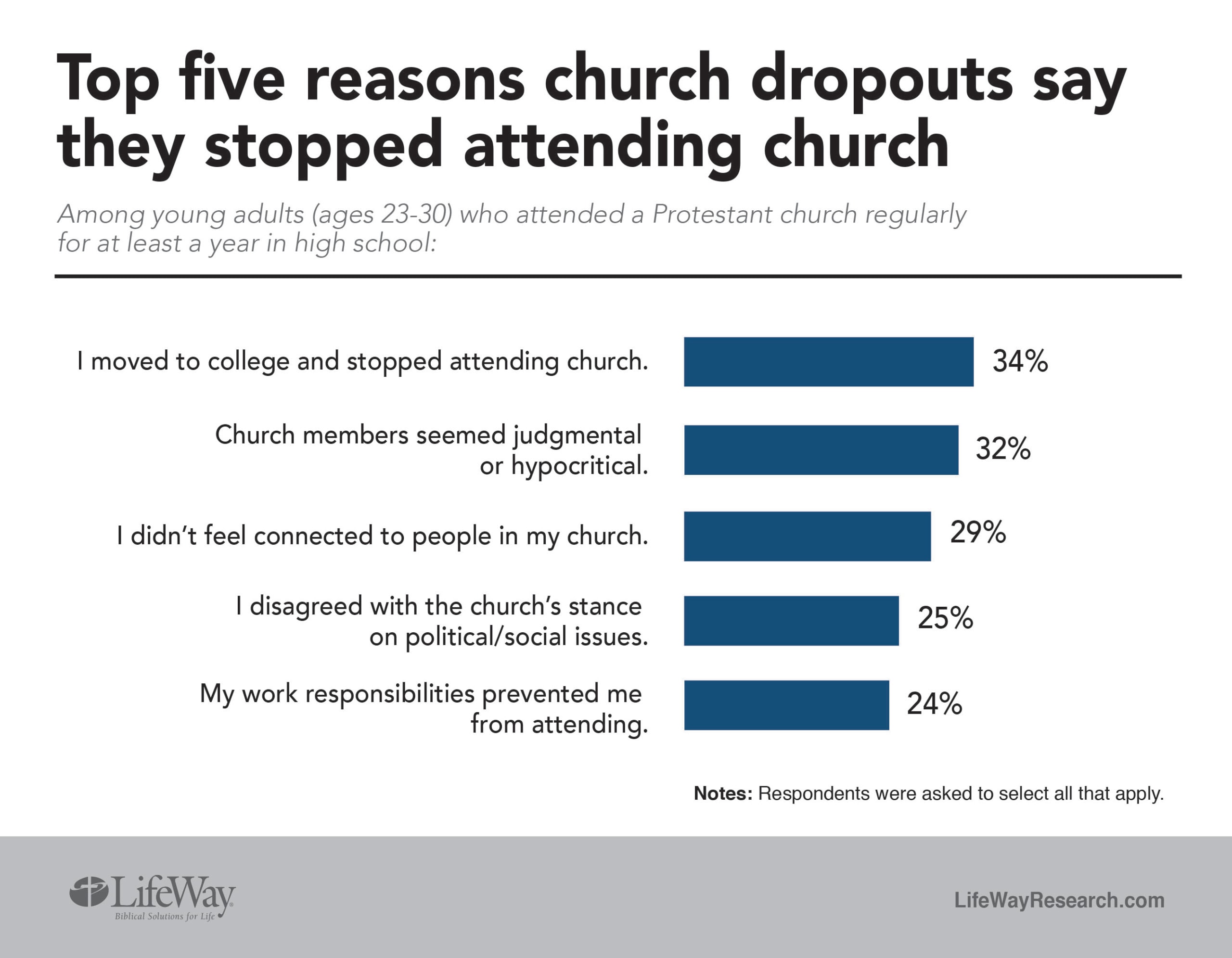
22. Lockdowns Accelerated Church Attendance Decline
This number accelerated due to widespread church lockdowns and many churches are still recovering. Now that lockdowns are behind us and the pandemic has waned, churches are seeing some past members return and new guests arrive. However, on average, churches are at 85% of their pre-pandemic attendance level.
It’s difficult to determine current attrition rates for most churches or how many people are leaving the church each year, due to the unique circumstances of the last few years. It may be another year or two before we can know what was lost and what was gained with any accuracy.
Key Statistics:
- Churches typically see a 10%-15% attrition rate every year (Nick Blevins)
- Churches are still recovering from pre-pandemic attendance losses (Lifeway Research)
- On average, American congregations are at 85% of their pre-pandemic attendance level (Lifeway Research)
23. What Percentage of Christians Do Not Attend a Church Service?
From Barna, 16% of Christians who regularly attended church services before COVID no longer attend at all. Surprisingly, Boomers had the highest dropoff rate, with 22% self-reporting as no longer attending church services either in-person or online.
In comparison, 13% of Millennials who attended regularly pre-pandemic have abandoned church services entirely now. As noted earlier, Millennials make up the biggest surge in returns to the church.
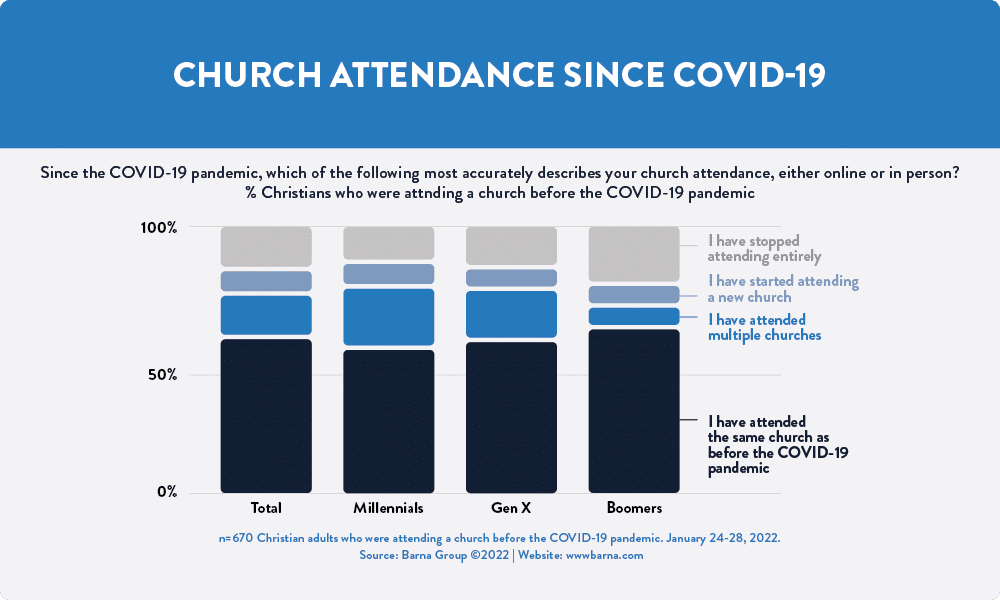
24. Engagement Is the New Church Attendance
Some church leaders are shifting away from using attendance as the primary metric for growth and looking to engagement instead.
Key Statistics:
- Churches are still recovering from pre-pandemic attendance losses (Lifeway Research)
- On average, churches are at 85% of their pre-pandemic attendance level (Lifeway Research)
- Because of reduced attendance rates, 68% of churches have congregations of fewer than 100 people, including 31% who have fewer than 50 (Lifeway Research)
- Smaller churches were more likely to report being at or near their previous attendance rates (Lifeway Research)
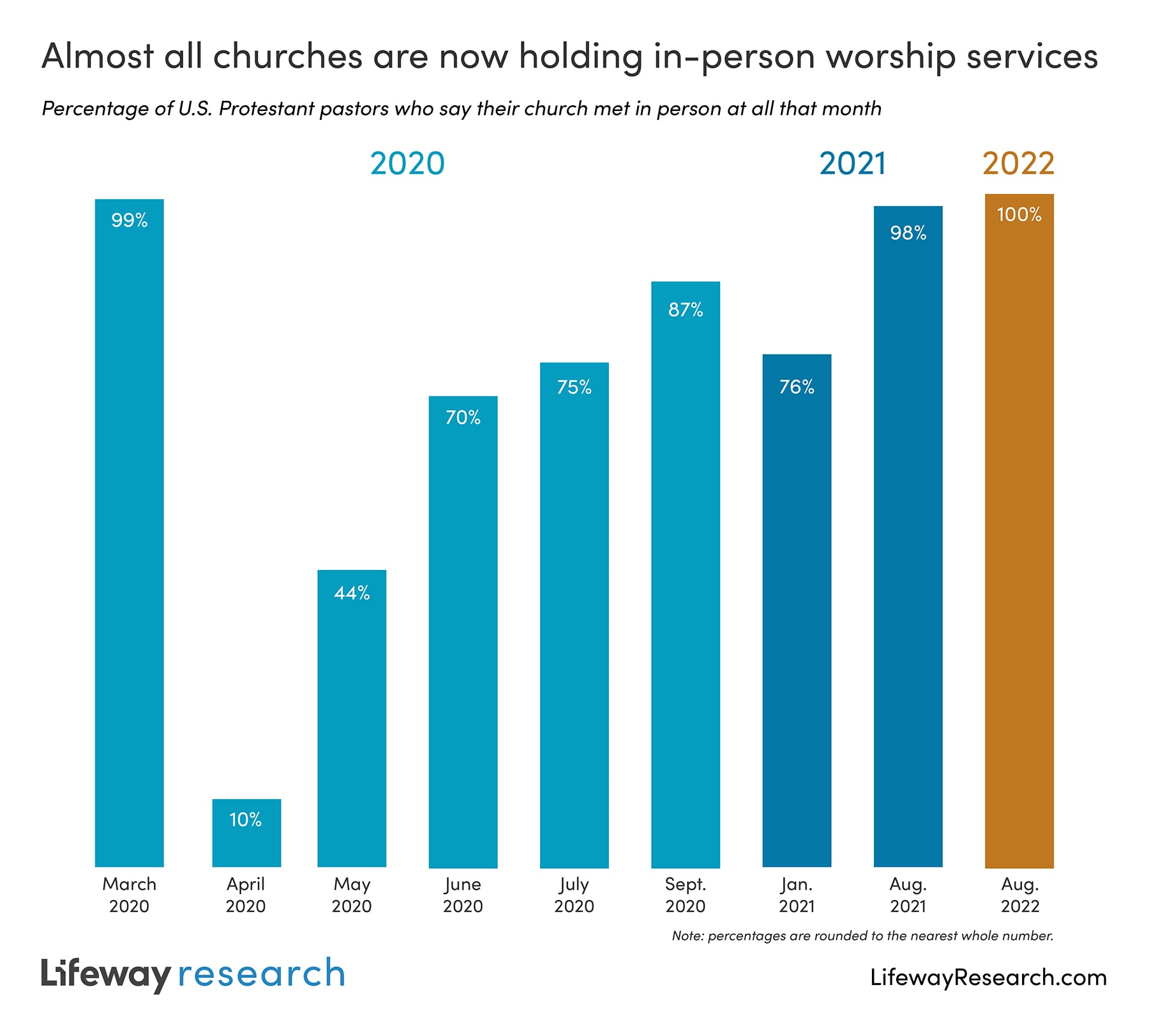
25. Regular Attendance is Being Redefined
While it will vary from pastor to pastor, 30% of pastors consider ‘regular attendance’ to mean attending church at least twice a month. 16% of pastors still consider once-a-week attendance the required threshold for regular attendance (Lifeway Research).
It’s interesting that church members themselves (many of whom are attending less often than they used to) have a stricter definition of regular church attendance than pastors do. In fact, 59% of members say “regular attendance” means attending church once a week or more (Lifeway Research).
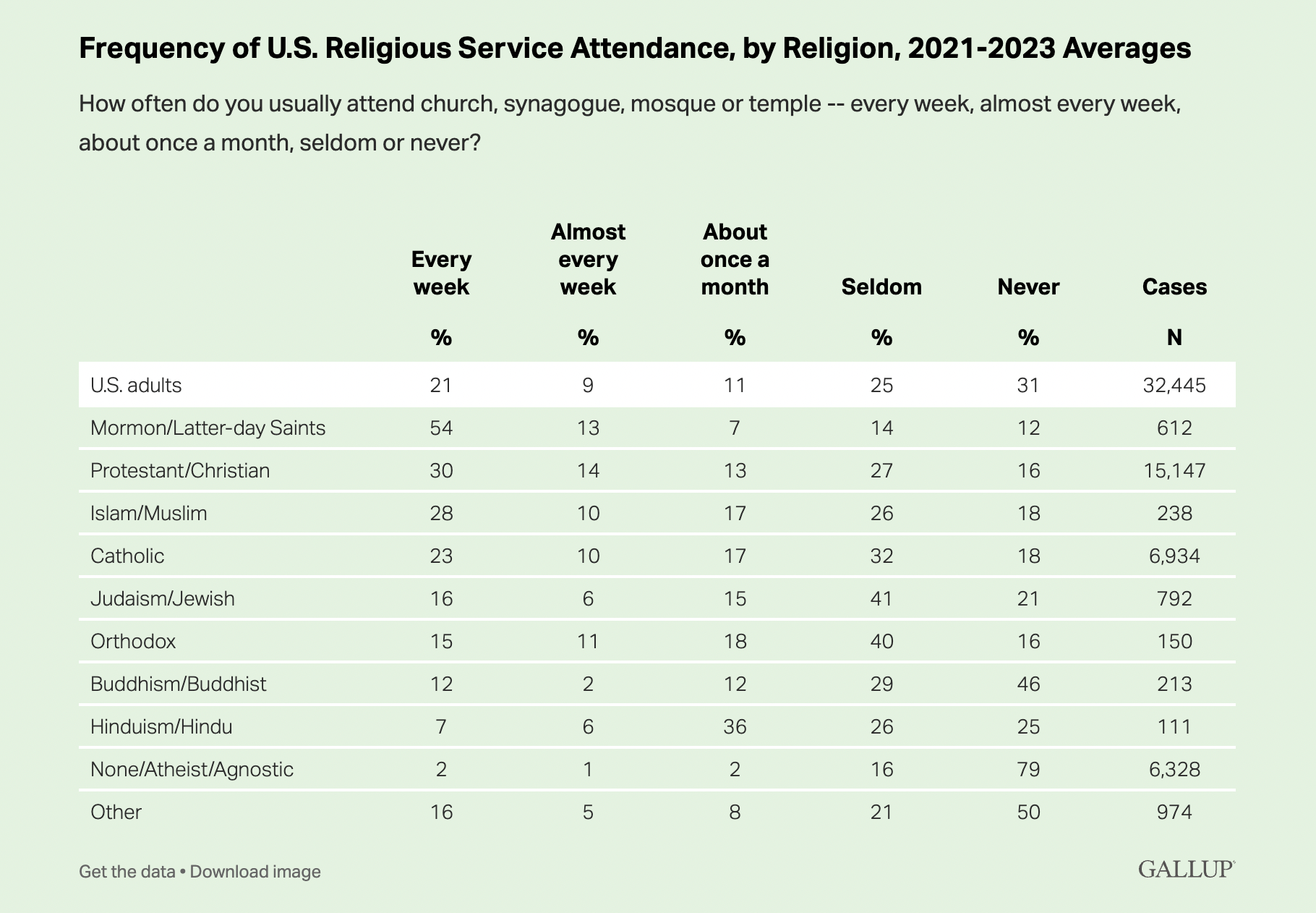
26. Growing churches offer different worship
Growing churches were about 50% more likely to offer only contemporary or modern worship and no traditional worship. This is seen more and more in churches today especially with younger generations.
27. Churches see high rate of new commitments
Growing churches are seeing a much higher percentage of people indicate decisions to follow Jesus within the last 12 months, meaning they are growing AND helping people say “yes” to Jesus.
28. Reported Giving Amounts
Nucleus has done research and found that the average donation size is roughly $205, with 77% of donations polled being given only yearly. And no surprise, the month that people give the most is December.
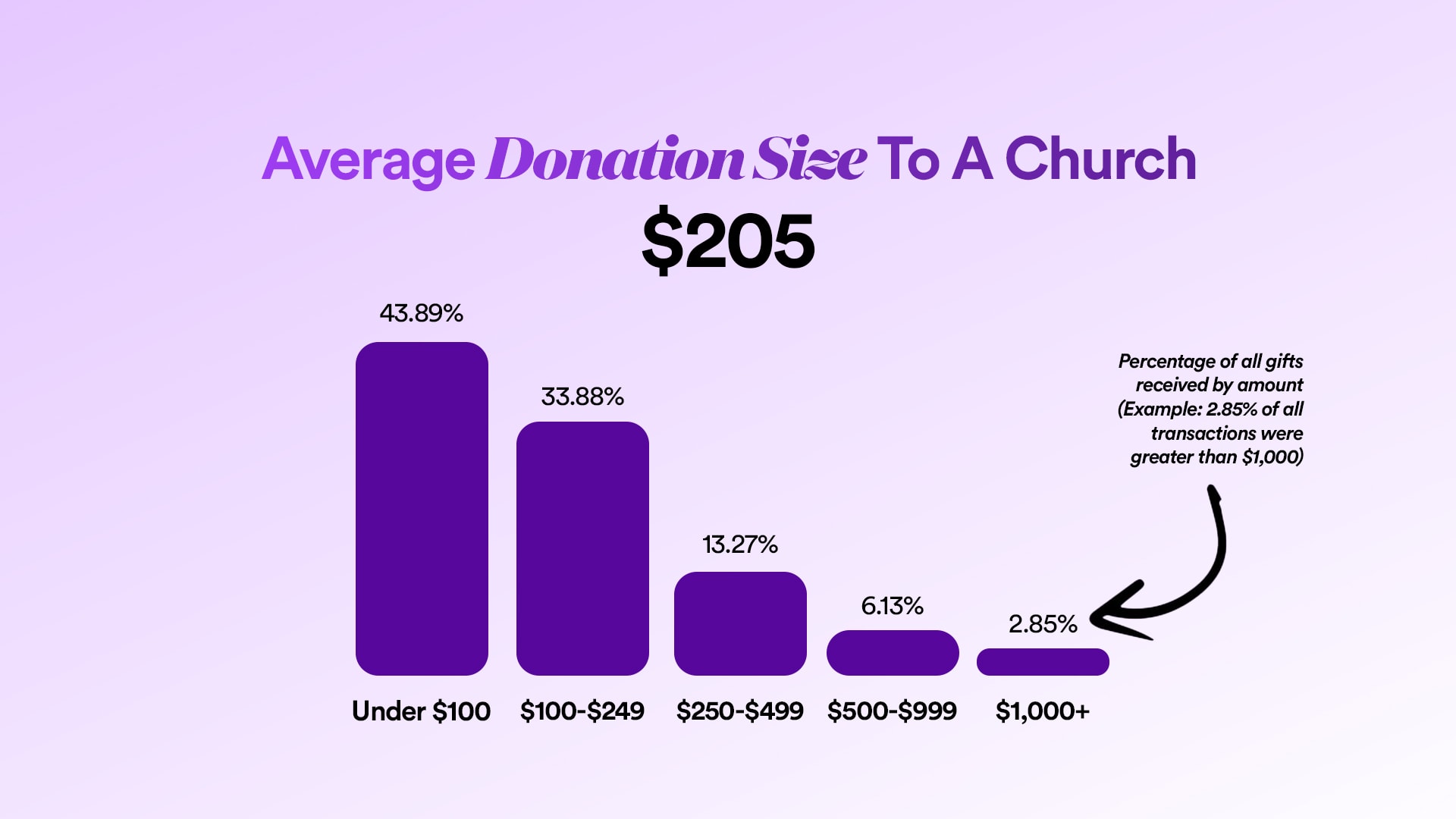
29. The Majority of Americans Still Believe That Church is an Important Part of Christmas
Despite shifts in church attendance patterns over the years, the significance of church during Christmas remains strong in the American psyche. Major holidays, especially Christmas, continue to draw people into churches. A recent study by Lifeway Research reinforces this tradition, revealing that a significant 63% of Americans still view attending church services as an integral part of their Christmas celebration.
Previous Editions of Church Statistics You Should Know
Church Stats 2024
Church Stats 2023
Church Stats 2022
Church Stats 2021
Church Stats 2020
Church Stats 2019
Looking Ahead to 2025

These statistics provide rich insights into the past few years and what we can expect in 2025. Every city, state and church is going to have different stats, so we hope that you’ve found your church amongst this information. One thing always remains true, that Jesus is King, and that we will continue to welcome new Christians each year into the Kingdom of God!
Tell us what you’re looking forward to at your church in 2025!

